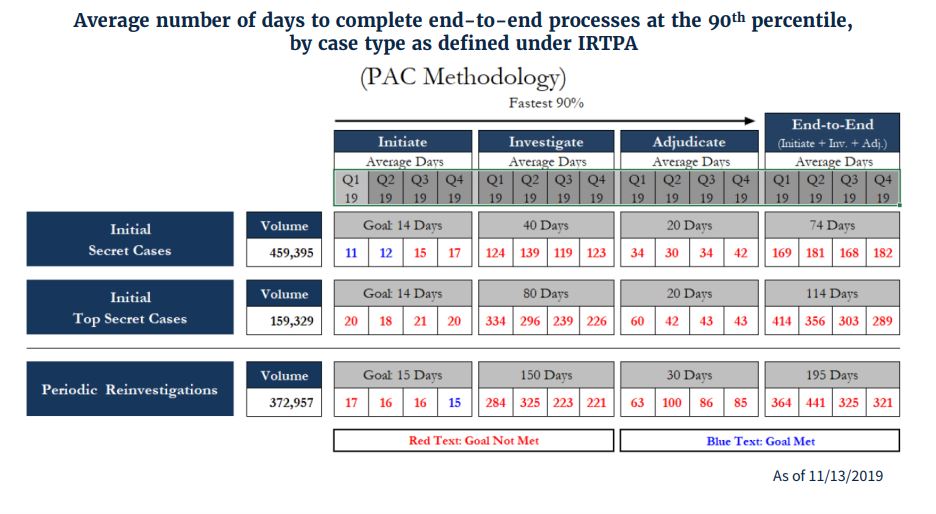Warner tells ODNI, OPM to get moving on major security clearance reforms
Senate Intelligence Committee Vice Chairman Mark Warner (D-Va.) has asked the Office of the Director of National Intelligence and the Office of Personnel Management...
Senate Intelligence Committee Vice Chairman Mark Warner (D-Va.) is asking the two federal agencies charged with bringing the decades-old security clearance process into the 21st century to accelerate the initiative.
The Office of the Director of National Intelligence and the Office of Personnel Management have been plotting a wide range of changes to the suitability, credentialing and security clearance system — an initiative that’s been coined as “Trusted Workforce 2.0” — for more than a year.
But Warner wants to put some political pressure on an administration initiative that’s received bipartisan endorsement with the recent passage of the annual defense authorization bill.
“I ask that you as the government’s security executive agent and suitability/fitness and credentialing executive agent, respectively, use this unique moment to realize sweeping reform and immediately issue guidance to implement this initiative,” Warner wrote Tuesday in a letter to OPM and ODNI.
Specifically, the letter is addressed to OPM Director Dale Cabaniss, who serves as the suitability and credentialing executive agent, and Joseph Maguire, acting director of national intelligence, who serves as the security executive agent.
Congress included, as Warner noted in his letter, a long list of provisions in the 2020 defense and intelligence authorization law that essentially codify the upcoming Trusted Workforce 2.0 changes.
The provisions call on several agencies to dramatically ramp up continuous vetting of security clearance holders, review the existing standards used to establish trust with an employee or contractor in government and detail plans to move from the five current investigative tiers to three.
“The new approach should yield higher quality decisions far more quickly, surface problematic cases much sooner and significantly improve workforce mobility,” Warner said. “While many important business process reforms have been adopted in the last two years to address backlogs in background investigations and adjudications, implementing Trusted Workforce 2.0’s structural remedies require guidance that only you as the executive agents can issue.”
Both the security and suitability executive agents have been planning, according to ODNI, to issue some sort of correspondence designed to instruct agencies to start adopting some of these anticipated changes. Both ODNI and OPM are expected to first make the move to continuous vetting a priority.
But as Federal News Network previously reported, the president’s signature on a new national security memo is supposed to truly put the wheels in motion on these modernization activities. His signature on that memo is apparently “imminent,” though it has been for several months now.
Warner has been active in the discussions among ODNI, the Defense Department, OPM and other agencies to drastically overhaul the security clearance process, and he was the author of many of the NDAA and intelligence authorization provisions designed to bring more transparency for industry to those plans.
As Warner mentioned, the newly initiated Defense Counterintelligence and Security Agency has made some major progress in whittling down the security clearance backlog from a 725,000-case inventory in April 2018.
The backlog sat at 248,000 in December, according to a new update on Performance.gov. Though DCSA is still largely missing congressional timeliness standards to initiate, investigate and adjudicate most security clearances, those times in most cases are going down.

Enrollment in continuous evaluation and vetting capabilities is also on the rise, according to the Performance.gov update. More than 300,000 people were enrolled in ODNI’s continuous evaluation program in October 2019, well above the agency’s 29,000 CE enrollees less than a year ago.
Enrollment in DoD’s own program, which does pull in some of the ODNI’s automated records checks, steadily rose over the course of fiscal 2019 and hit 1.4 million people by the end of the year. The Pentagon has said enrollment in continuous evaluation and vetting will more than double in 2020.
The development of the new investigative standards and guidelines is in the “inter-agency coordination” stage, according to the Performance.gov.
Other initiatives that are supposed to help bring the security clearance system out of the 20th century are also underway.
DCSA, ODNI and OPM are on track to implement several shared services capabilities in mid-2020 that will, among other things, develop background investigation reports, adjudicate security clearances, support reciprocity requests and create an unclassified data exchange, according to Performance.gov.
In addition, DoD and DCSA have finished an onboarding strategy to slowly begin enrolling customer agencies in the National Background Investigation Service, the new end-to-end case management system the Pentagon is building.
Copyright © 2025 Federal News Network. All rights reserved. This website is not intended for users located within the European Economic Area.
Nicole Ogrysko is a reporter for Federal News Network focusing on the federal workforce and federal pay and benefits.
Follow @nogryskoWFED





